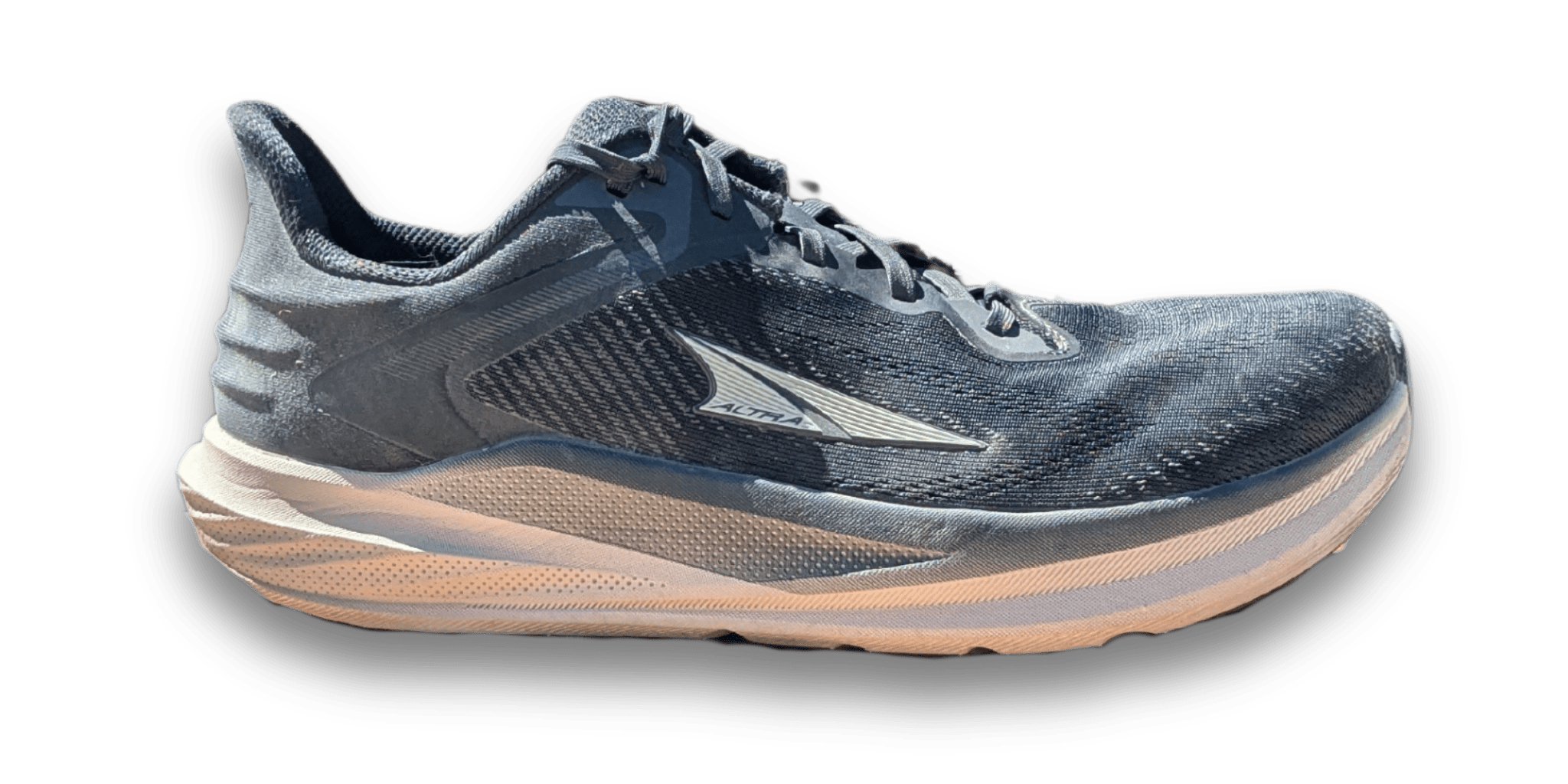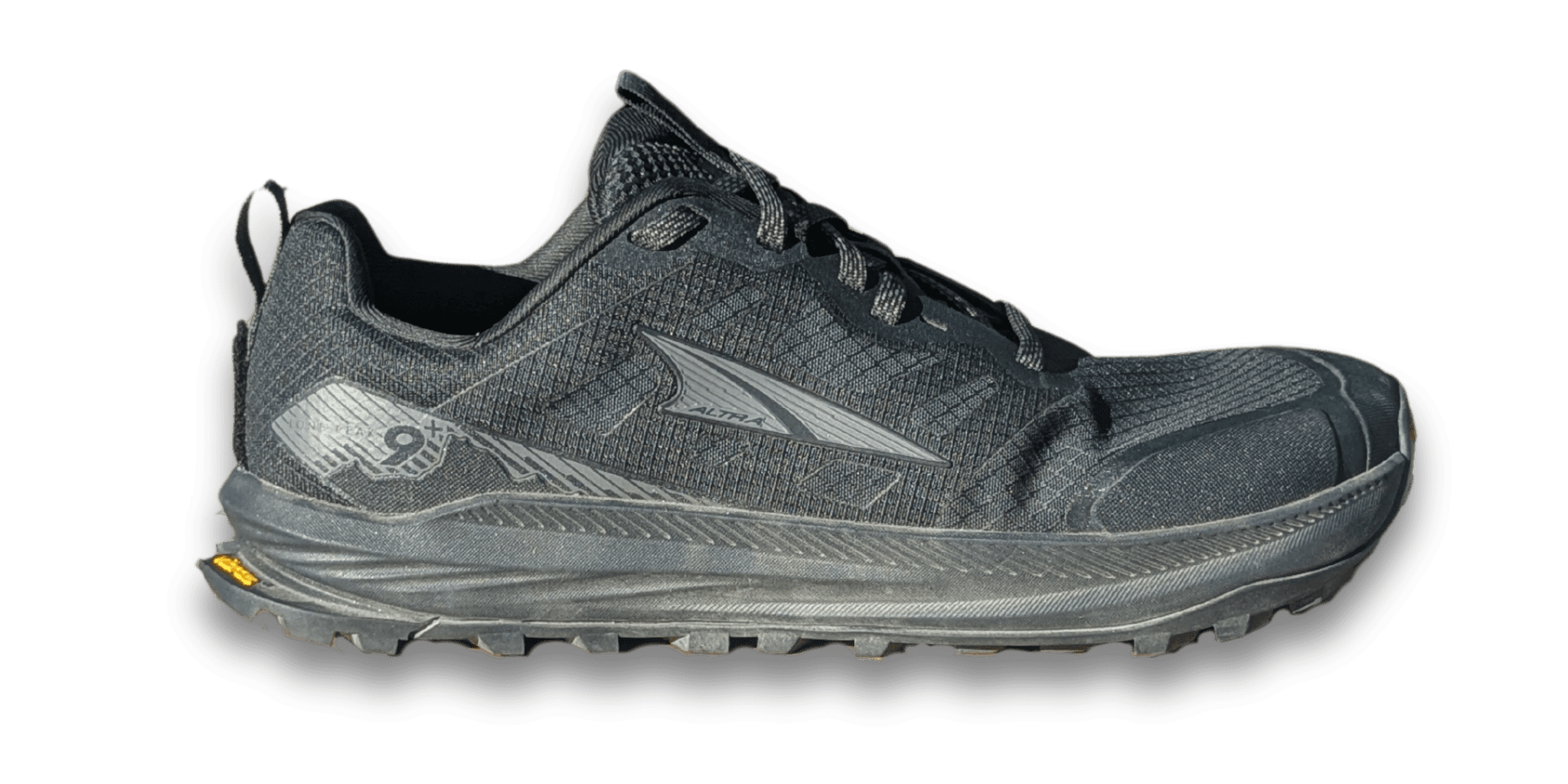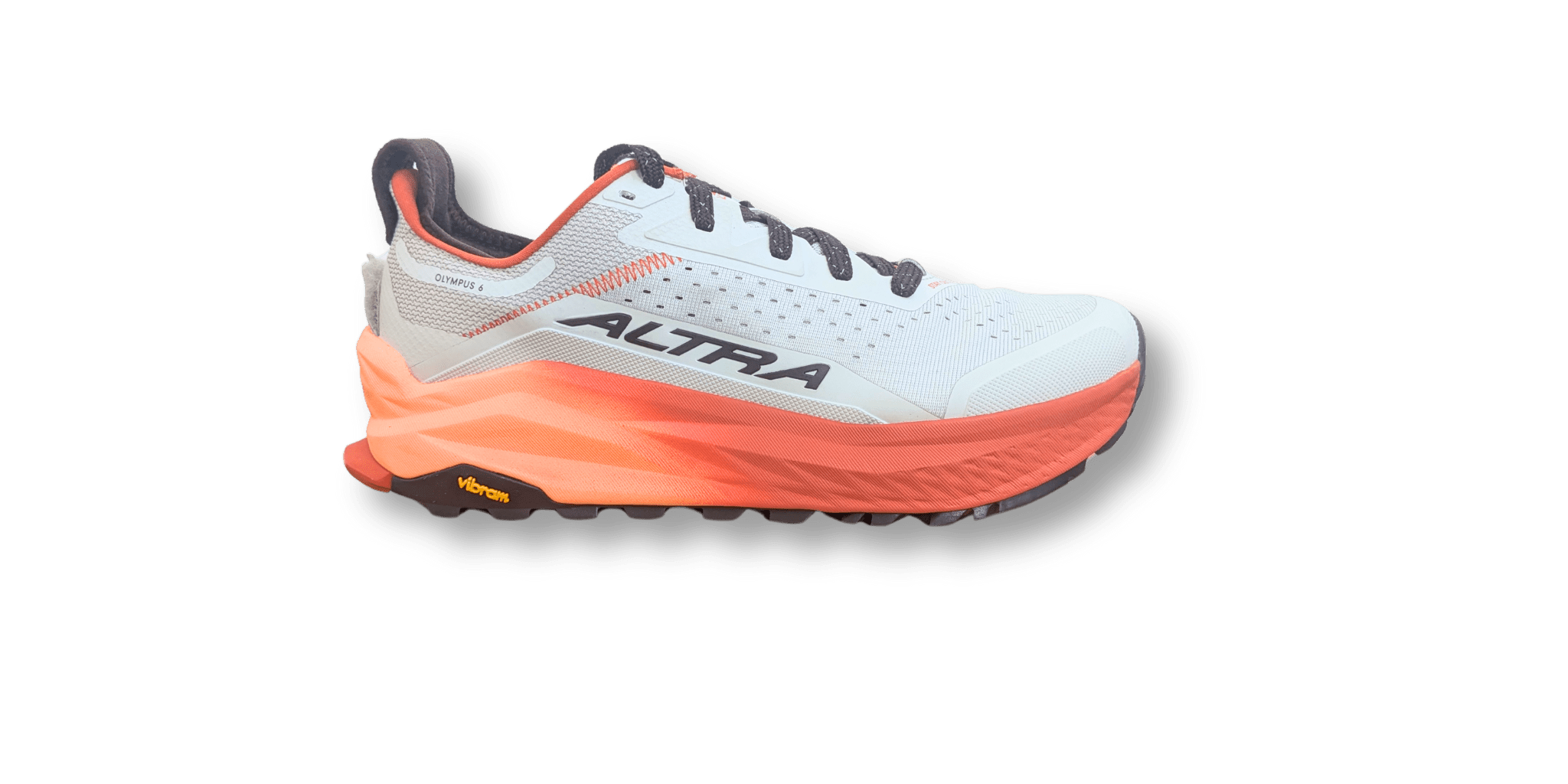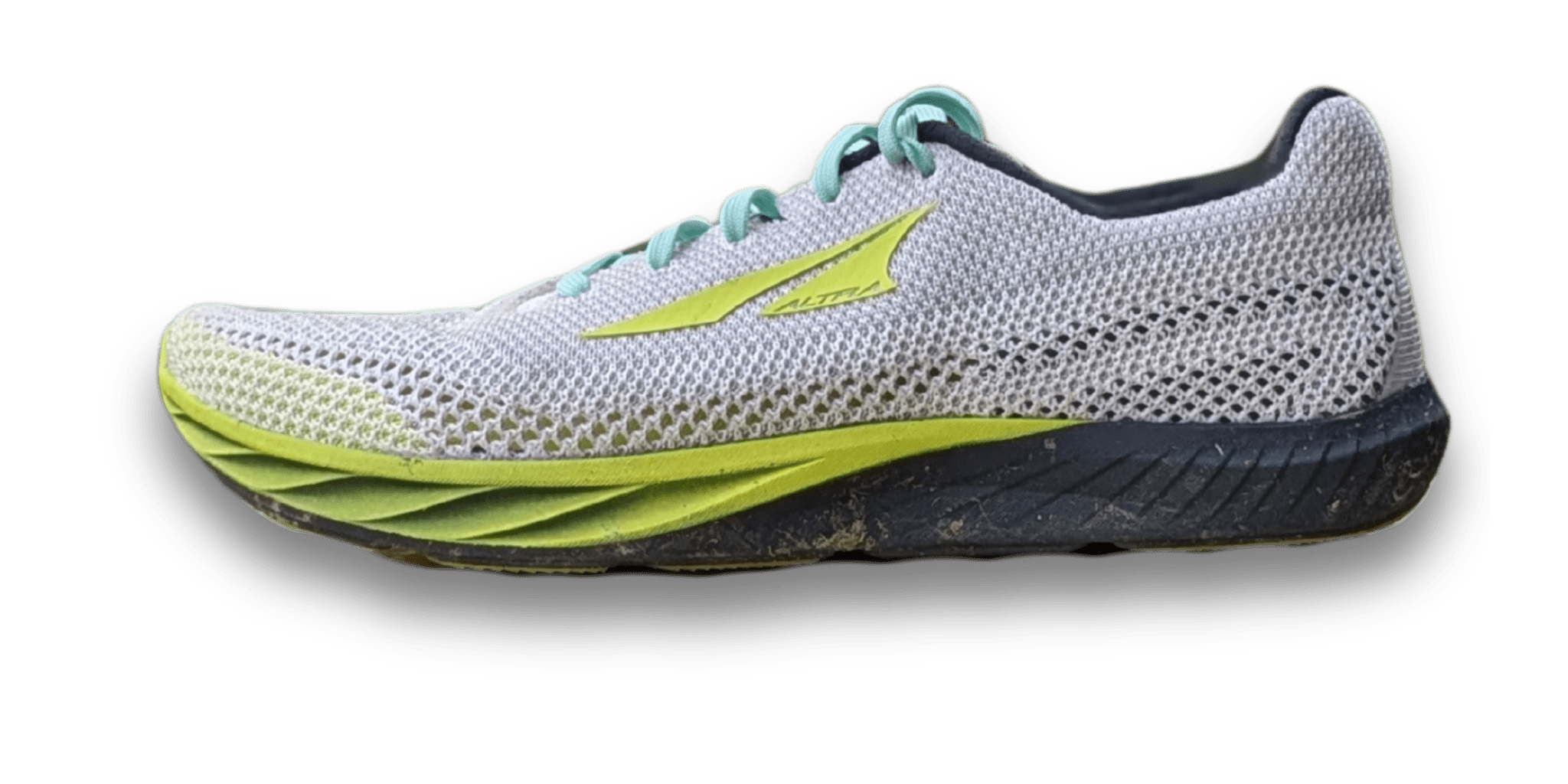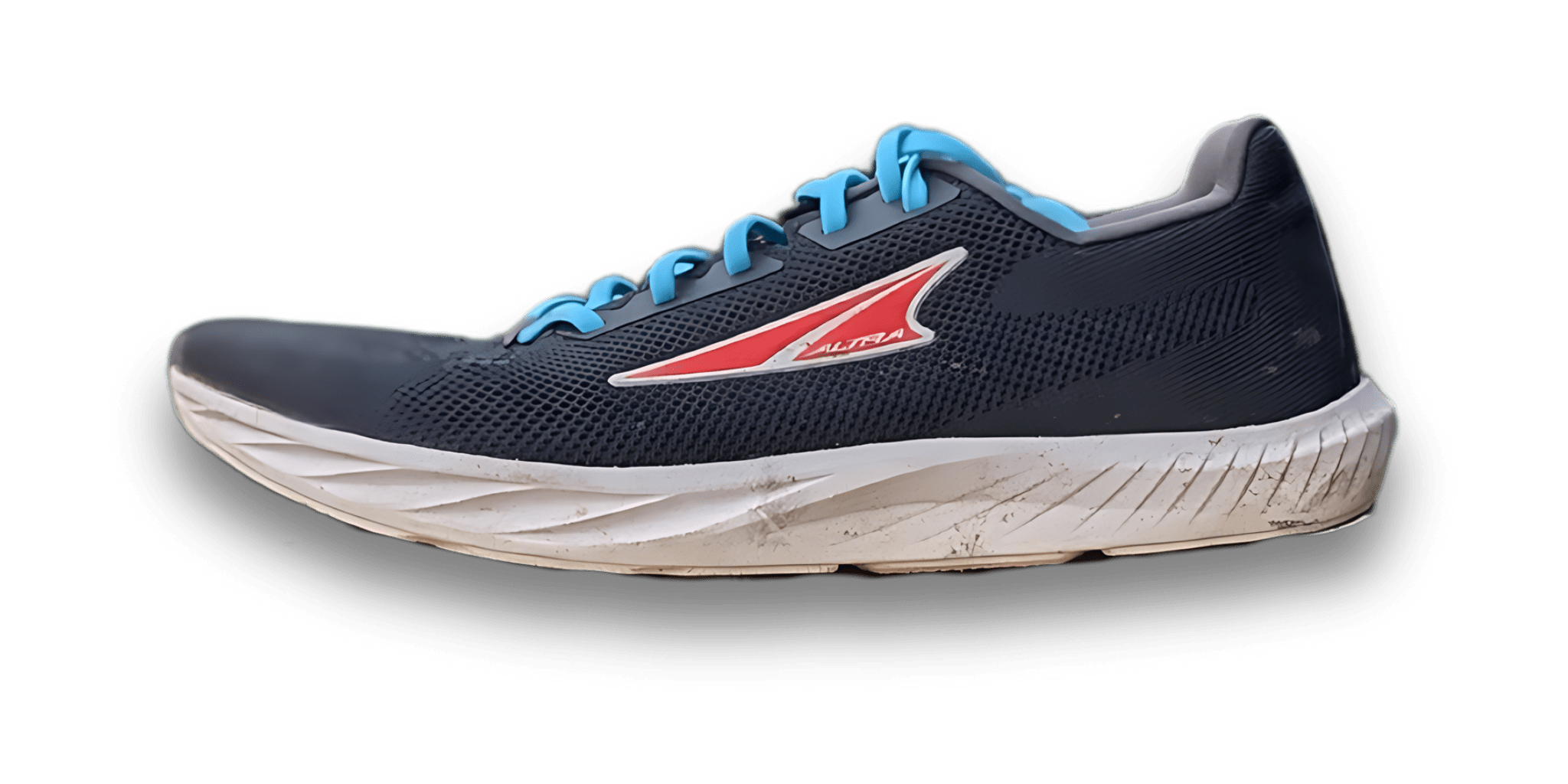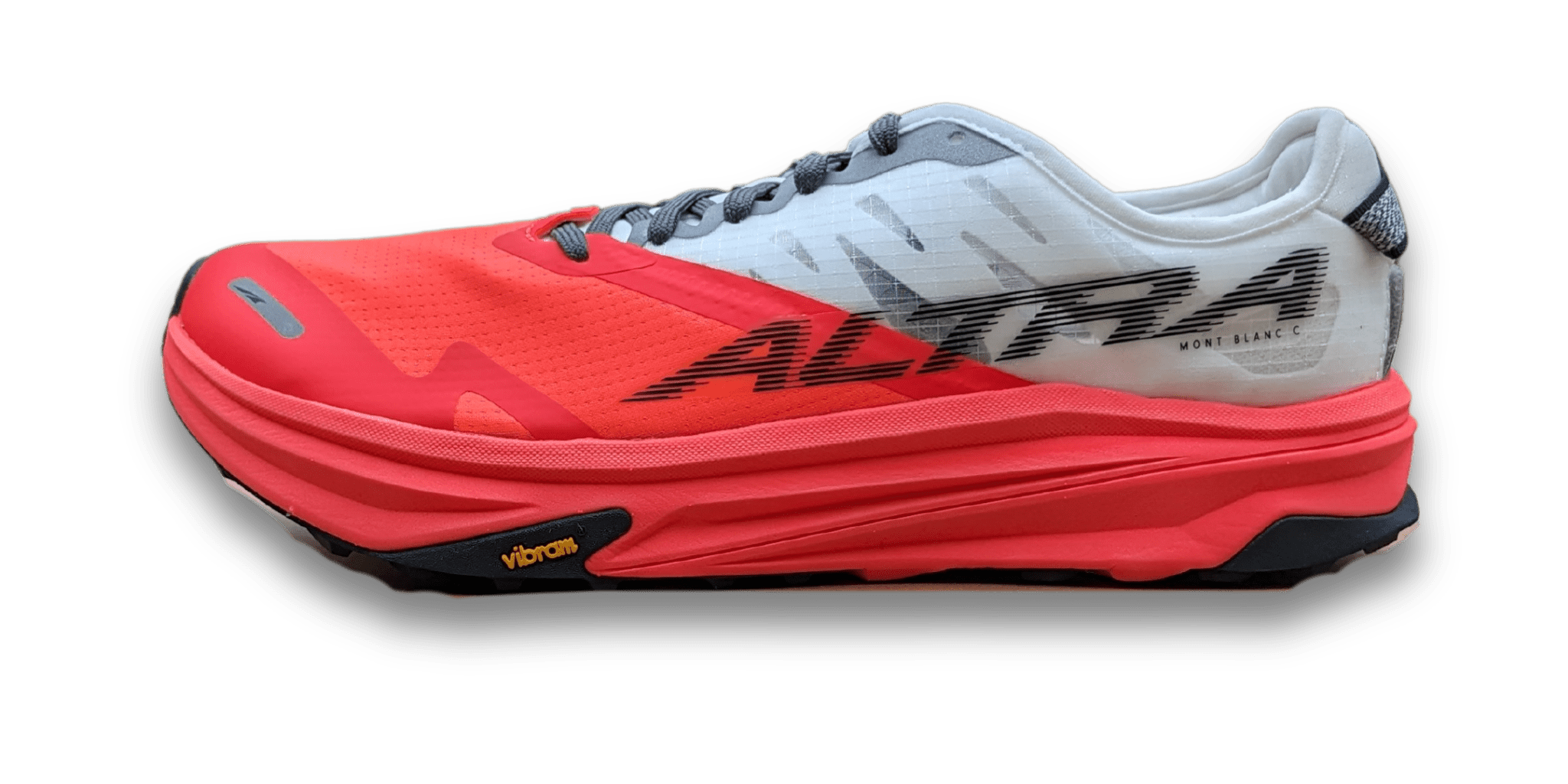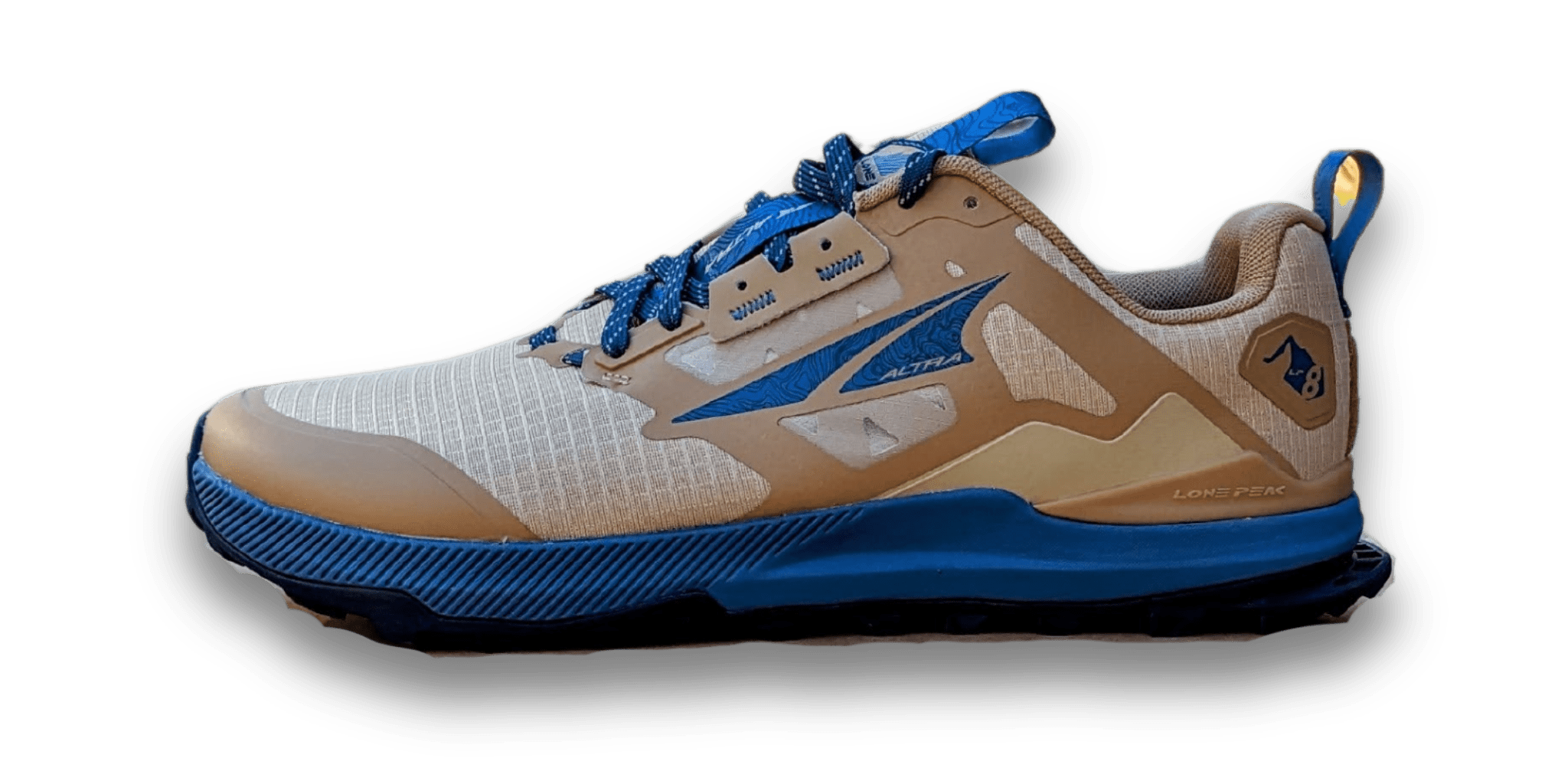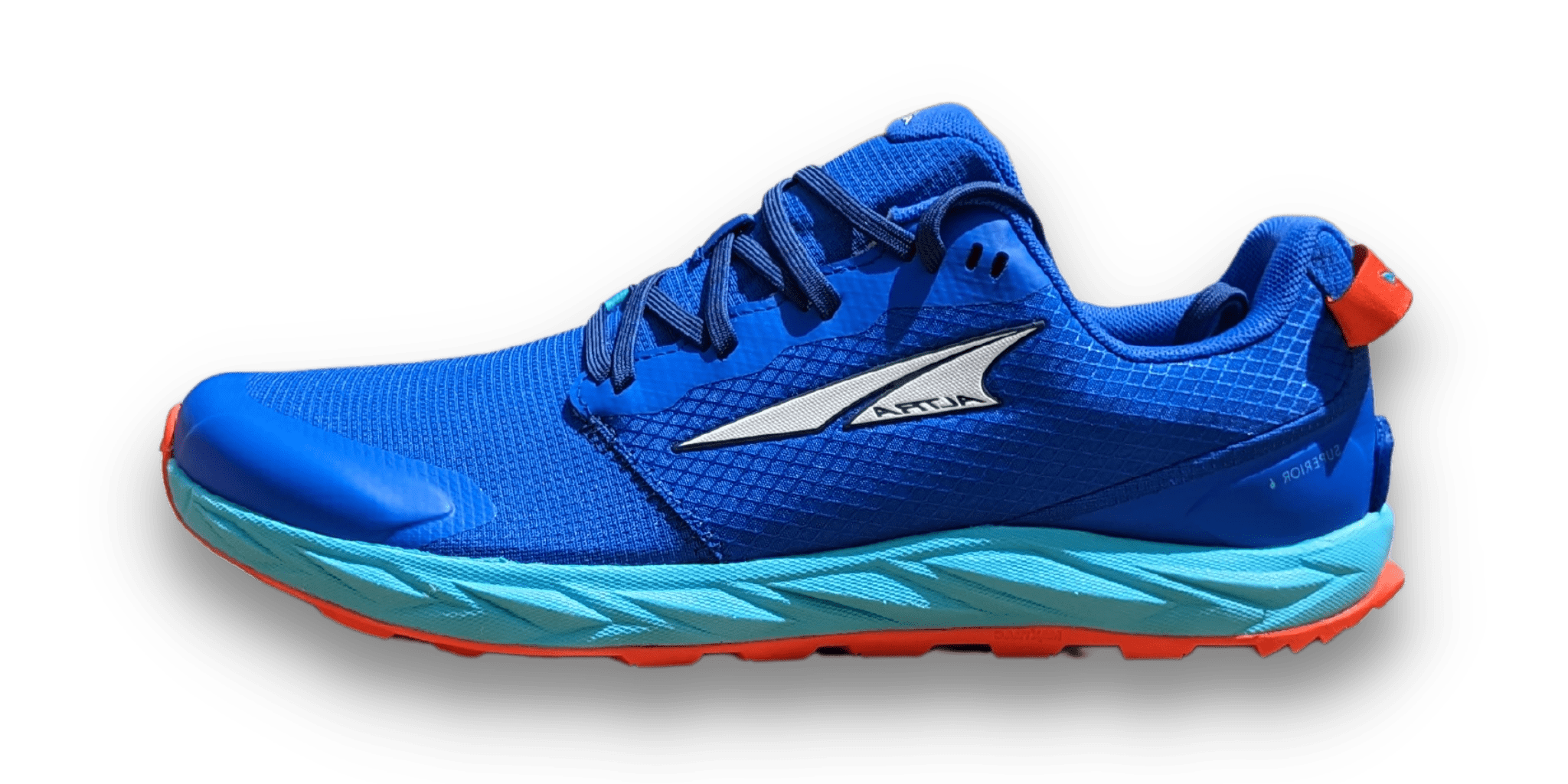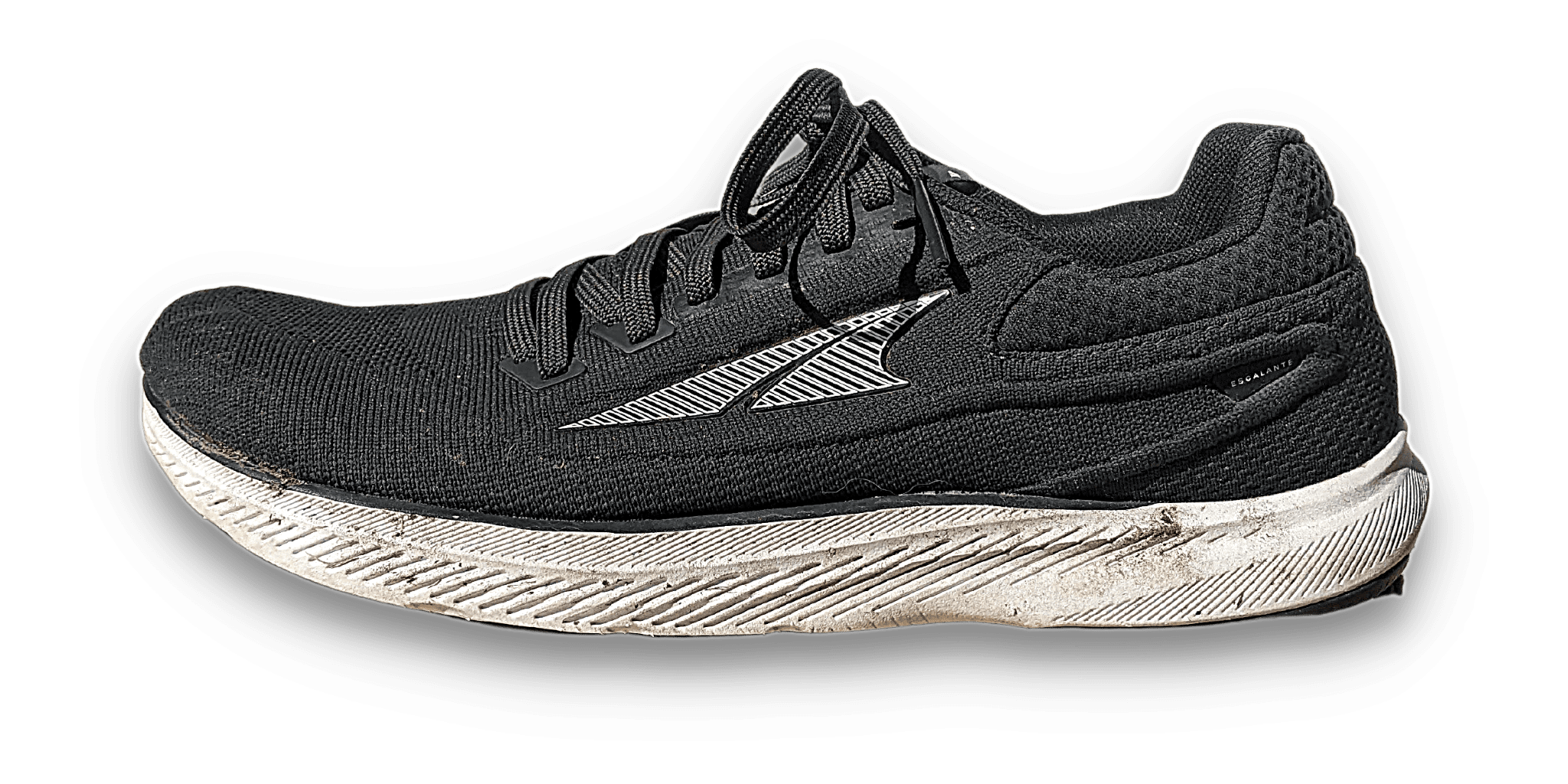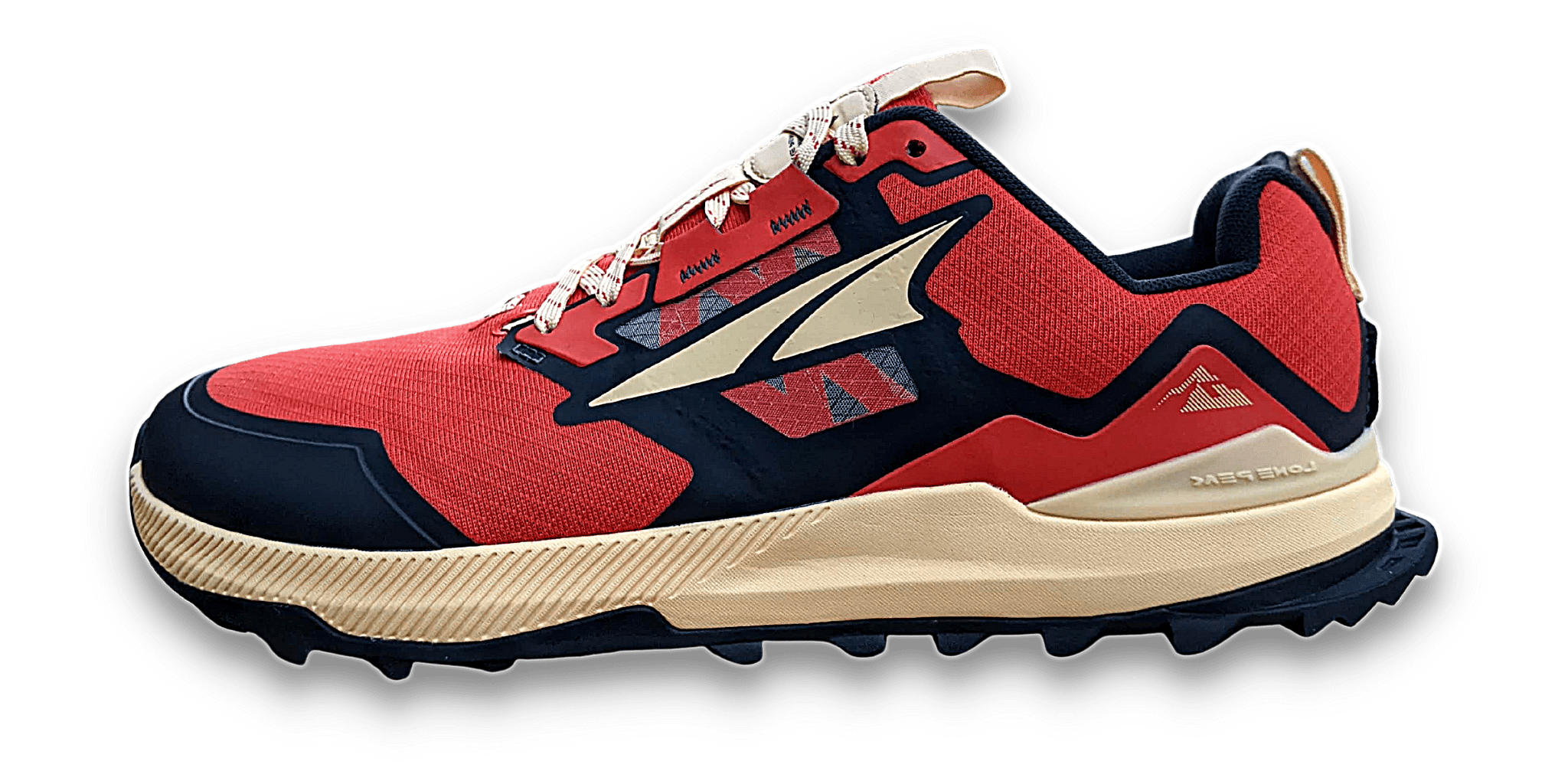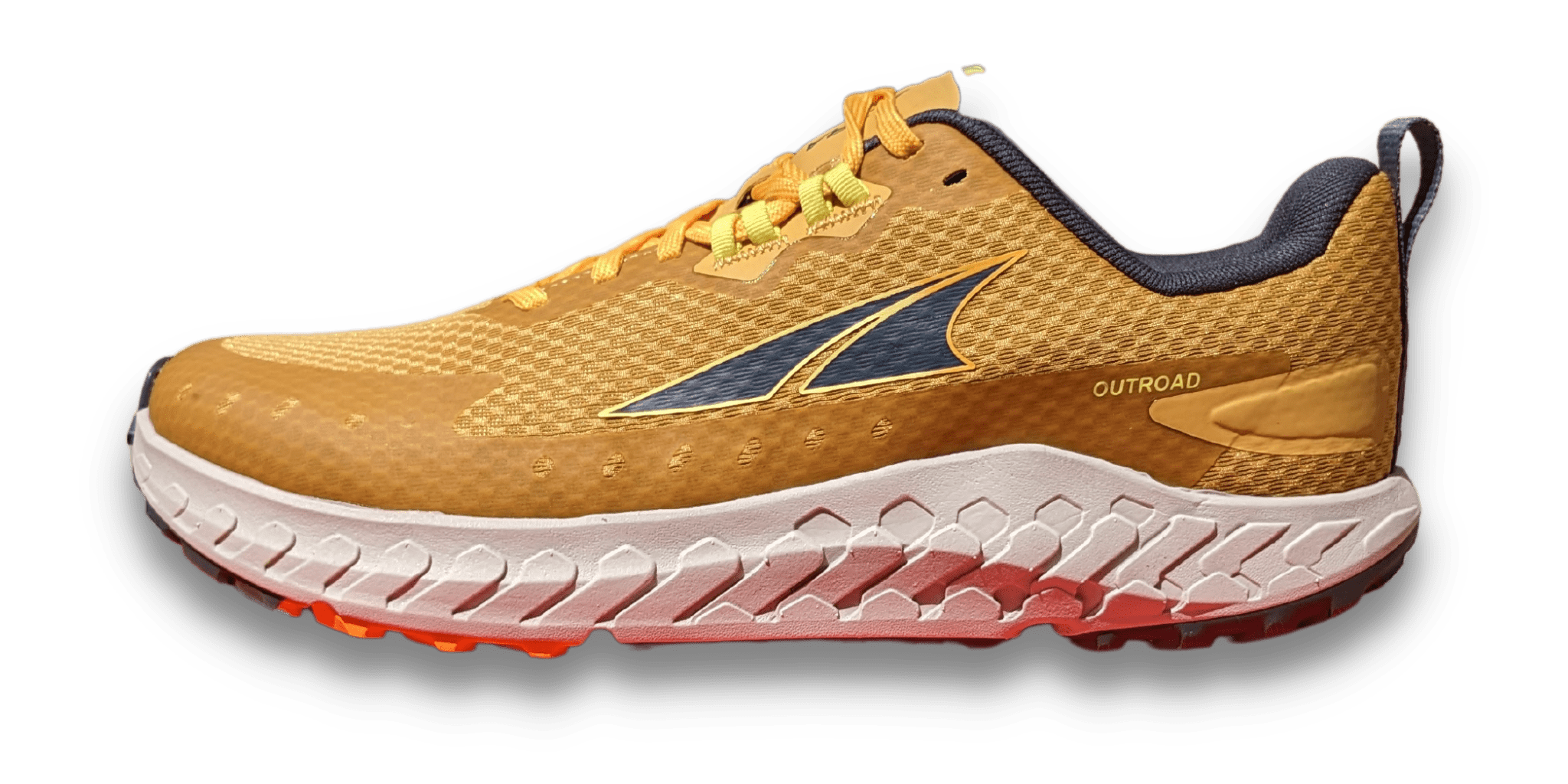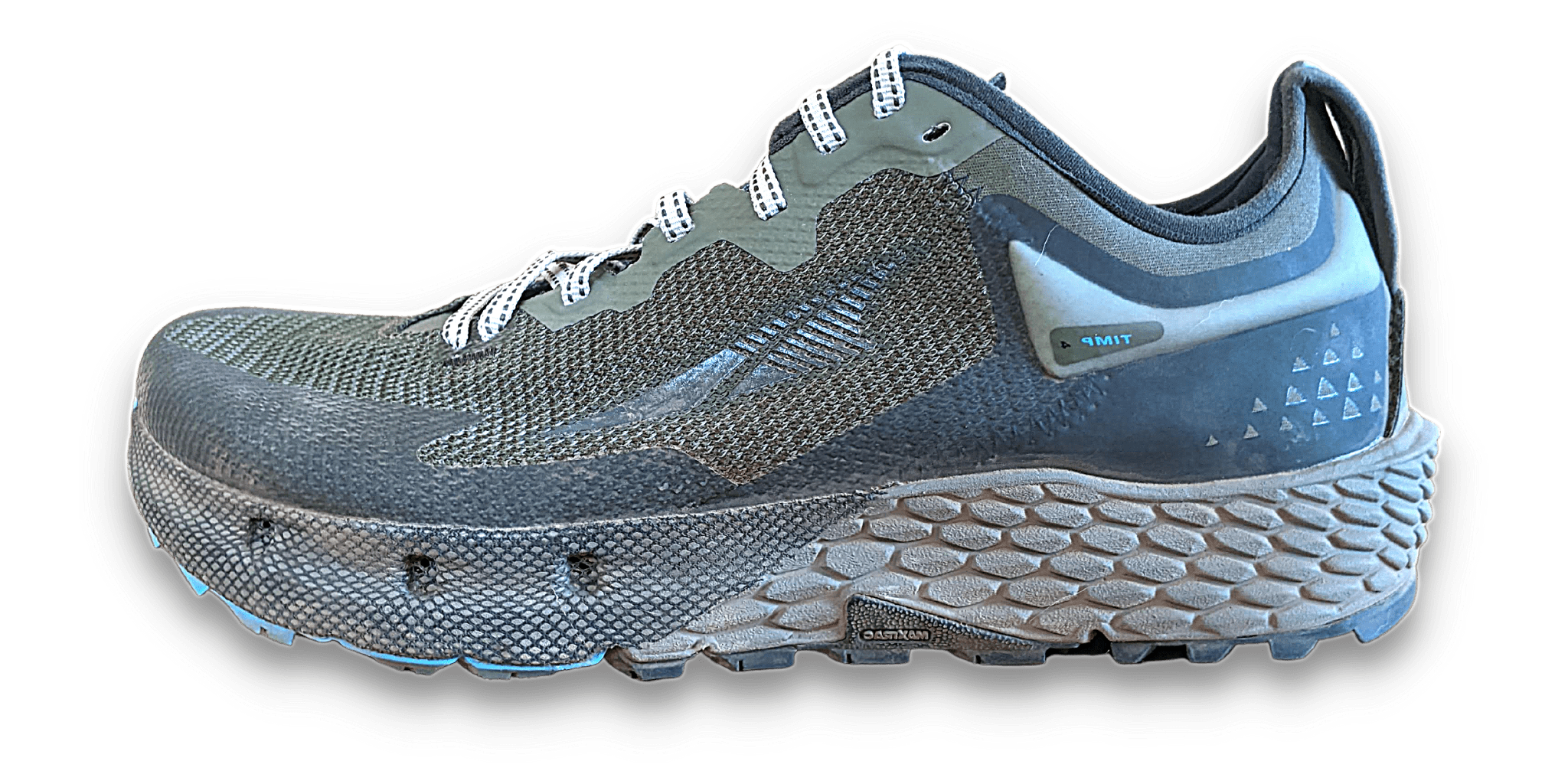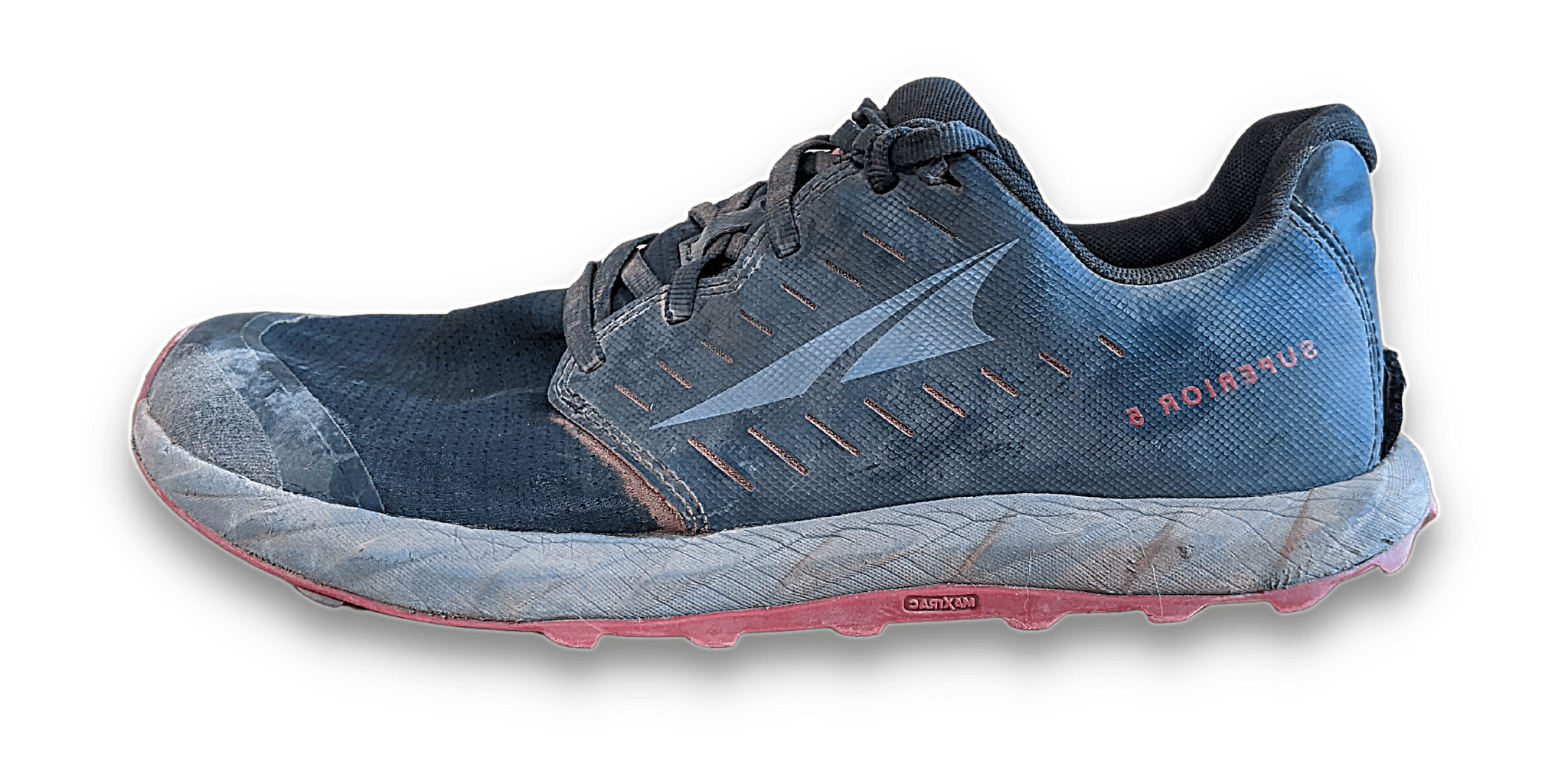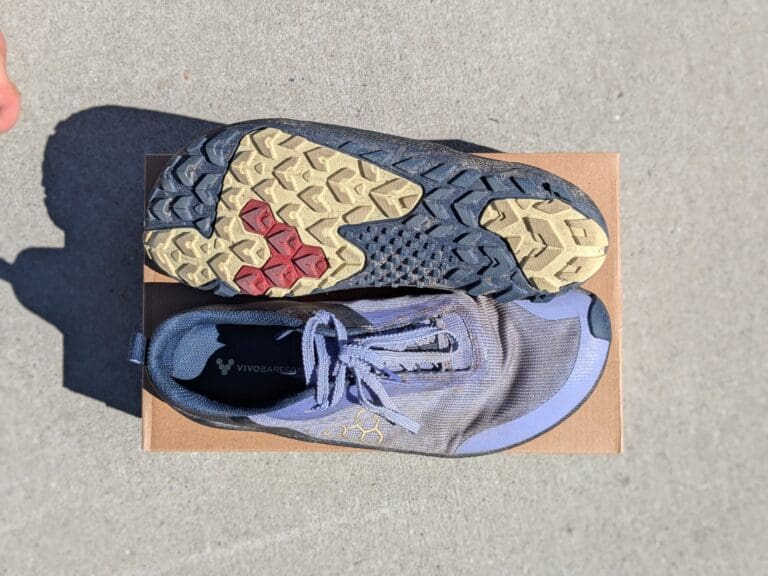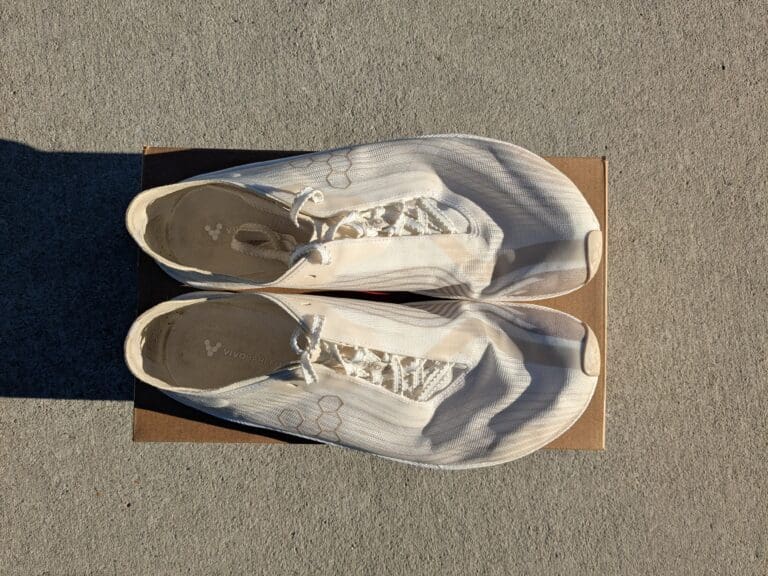Altra Lone Peak; a shoe that’s been in the rotation of many trail runners over the years. There are few others on the market like the Lone Peak, and it’s solidified itself as the wide, responsive, flexible option when comfort is paramount.
Altra Timp; still a relatively new kid on the block –or rather, market, and has morphed over time. The most recent version, Timp 4, is a bridge between two worlds –not quite a traditional trail runner such as Hoka, but not quite as wide and forgiving as the Lone Peak.
Which one is for you?
There are multiple factors to that decision, so let’s get into this comparison to see where the two shoes shine. But I’ll quickly go over what sets the Altra brand apart from other running shoe brands in the market.
What’s Different about Altra’s?
If you’re new to Altra, it’s worth noting two specific (and unique) elements that set Altra apart from the other running shoes on the market.
- All Altra shoes are zero-drop, meaning your heel and forefoot sit at the same height from the ground. That’s not true of most other shoes on the market.
- Altra also makes all their shoes with plenty of room in the toe box. If you’ve never ventured into “foot-shaped” running shoes, you’re in for a freeing treat!
That’s it for the general factors of the Altra shoe line, so let’s break down the details of the Altra Lone Peak and the Altra Timp.
Affiliate Disclosure: By clicking through the links on this page and purchasing the products, you’ll be helping me out. This is done because I receive a kickback from the sellers at no extra cost to you! Thank you so much for supporting us!
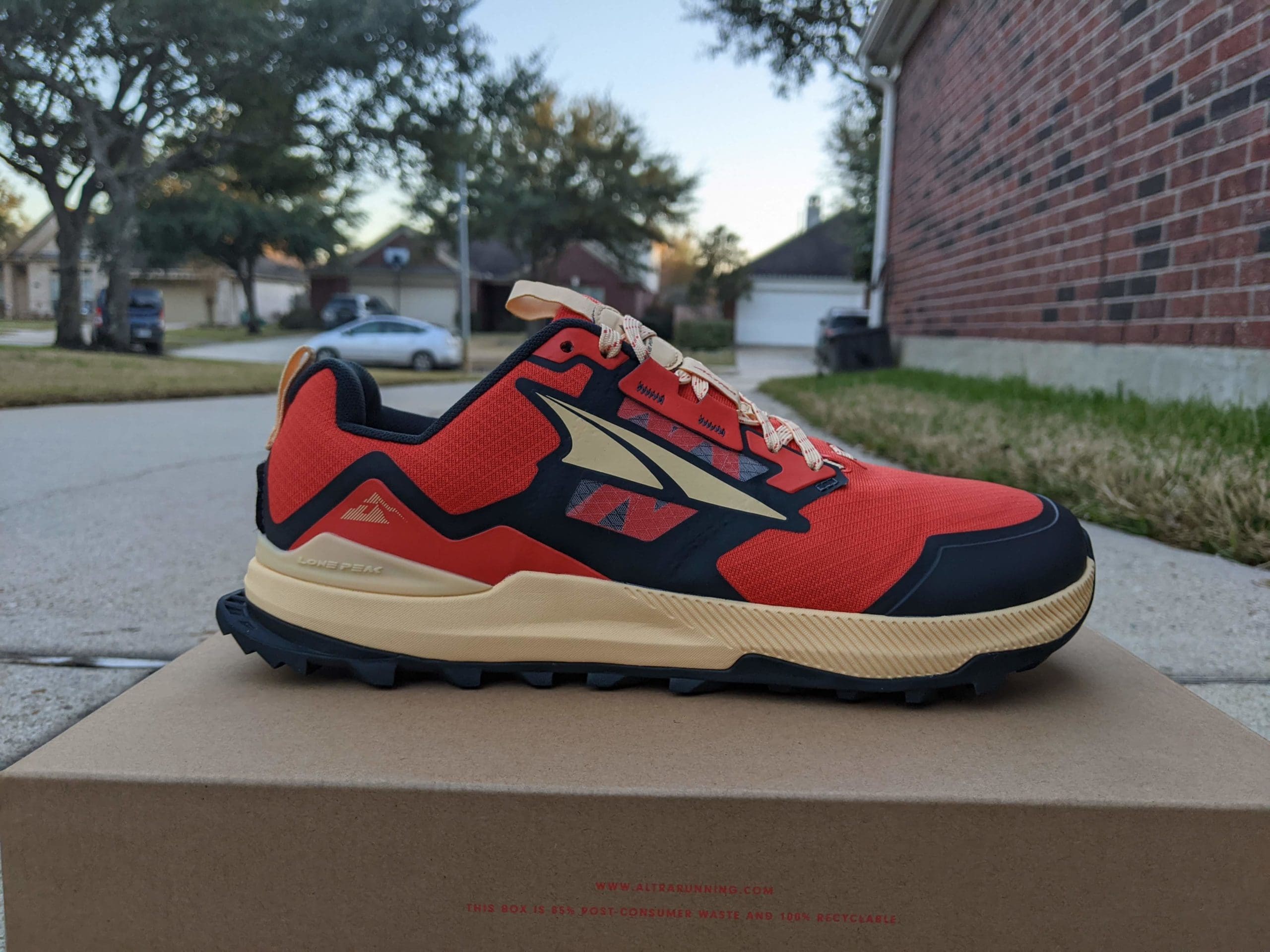
Altra Lone Peak
Cushioned but still nimble for those mid to long-distance races
AltraRunning.com
(30-day return window)
$150
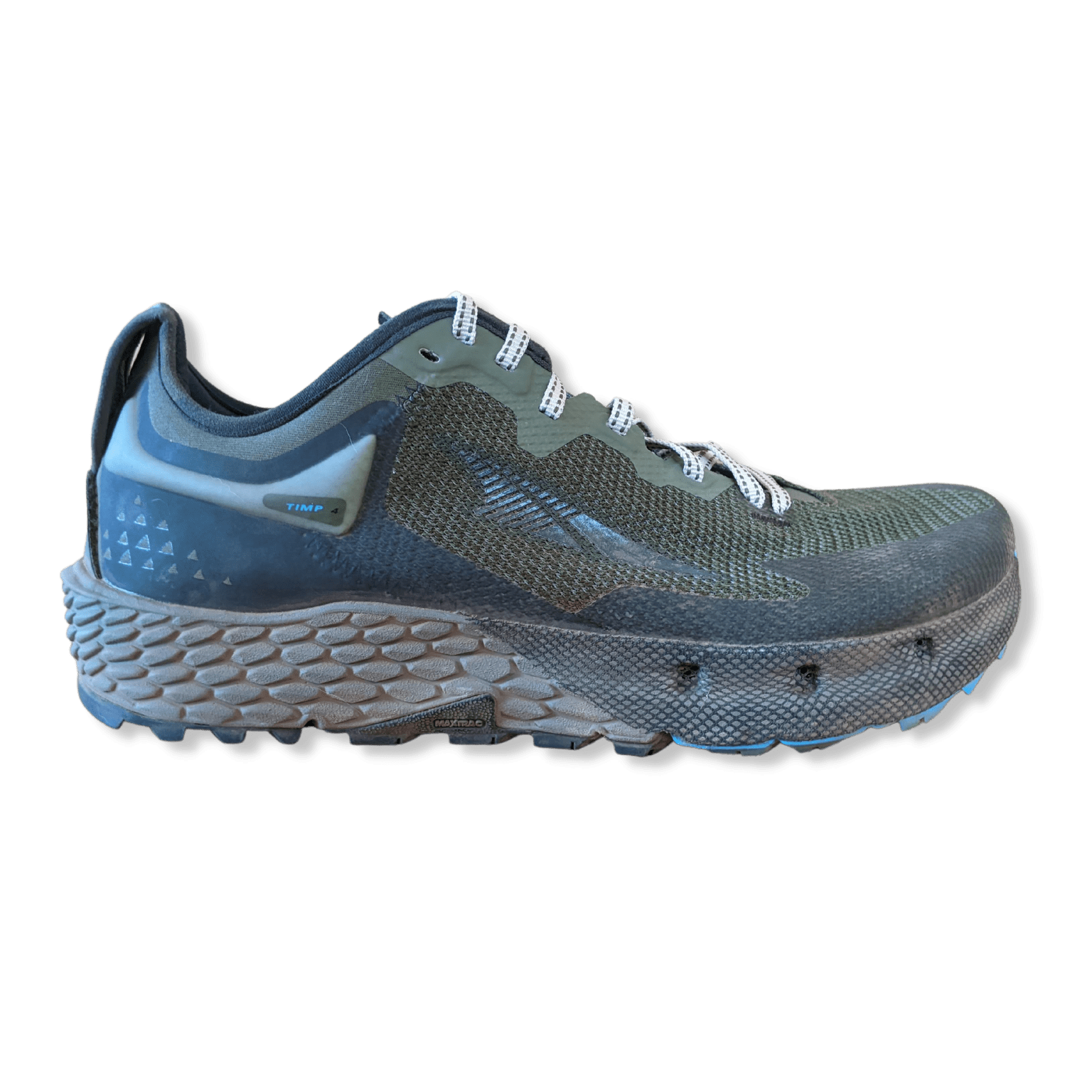
Altra Timp
Bridging the gap between Hoka’s and Altra’s
AltraRunning.com
(30-day return window)
$160
The Altra Lone Peak is the OG of the Altra lineup. Every trail runner (and a few non-trail runners) heard the hype about these unique shoes and was desperate to try them.
Originally they were wide, squishy, and had a slipper-like feel –not something anyone had seen in the running market before. A shoe where your heel is the same height as your forefoot, but still, offers cushion? You were either a trail runner that loved them or hated them!
Which Altra Shoe is for you?
Take a quick 4-question quiz to identify the perfect Altra running shoe for your feet! You'll get both road and trail options based on your answers!
Version 7 of the Lone Peak is still a throwback to those early days, but lucky for us they’ve matured to offer more longevity and a well-rounded midsole.
No more bulky heel cushioning and cheap uppers. Instead, the upper now supports overlay protection in all the right areas, and the trimmed-down heel pairs comfort with precision. The fit of the heel is a little more forgiving than the Timp, and less likely to cause heel slip.
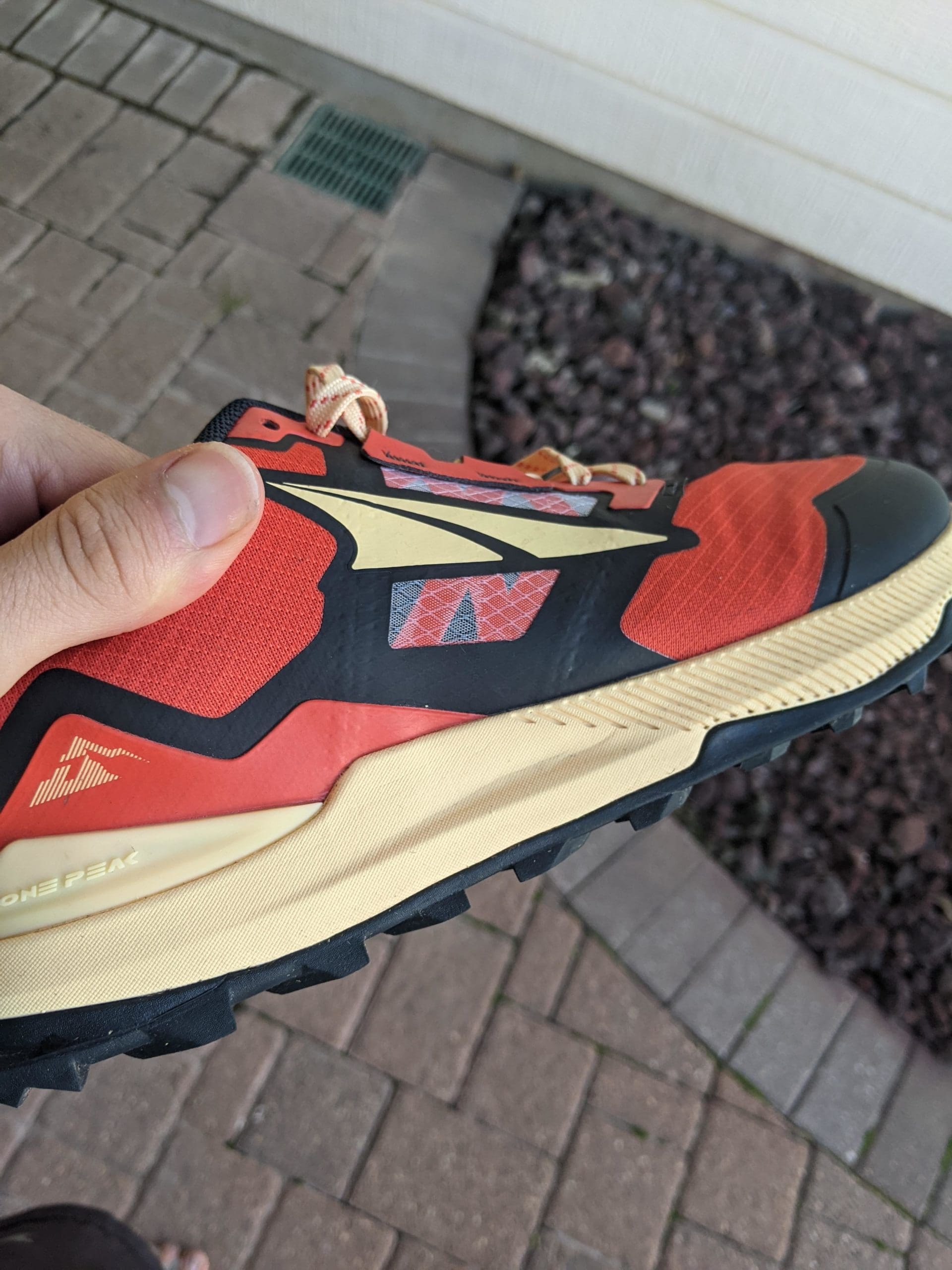
The Altra Lone Peak is a great shoe if you have especially wide, or voluminous feet.
The vast amount of space around the toes will give you room to splay and promote a more barefoot-like movement, and while the Timp is wide, the Lone Peak takes it to another level, and add depth too!
If you have wide feet, the Altra Lone Peak’s are likely the best shoes for you. Some would choose a half size down from their standard shoe size; it depends on how much room you like in the toe box.
With a gentle balance between responsiveness and cushion, the Ego foam is built for long distances and keeps its form for 100’s of miles. That extra 4mm of cushioning the Timp has over the Lone Peak contributes to a small difference. But it’s the flexibility you gain in the Lone Peak that makes the real difference. That’s why I still like to promote the Lone Peak as a “cushioned barefoot” shoe. Your foot still does some of the work to stabilize the body.
On more technical trails, I find that Lone Peaks are little more reassuring, because the sensor feedback is better than the Timps.
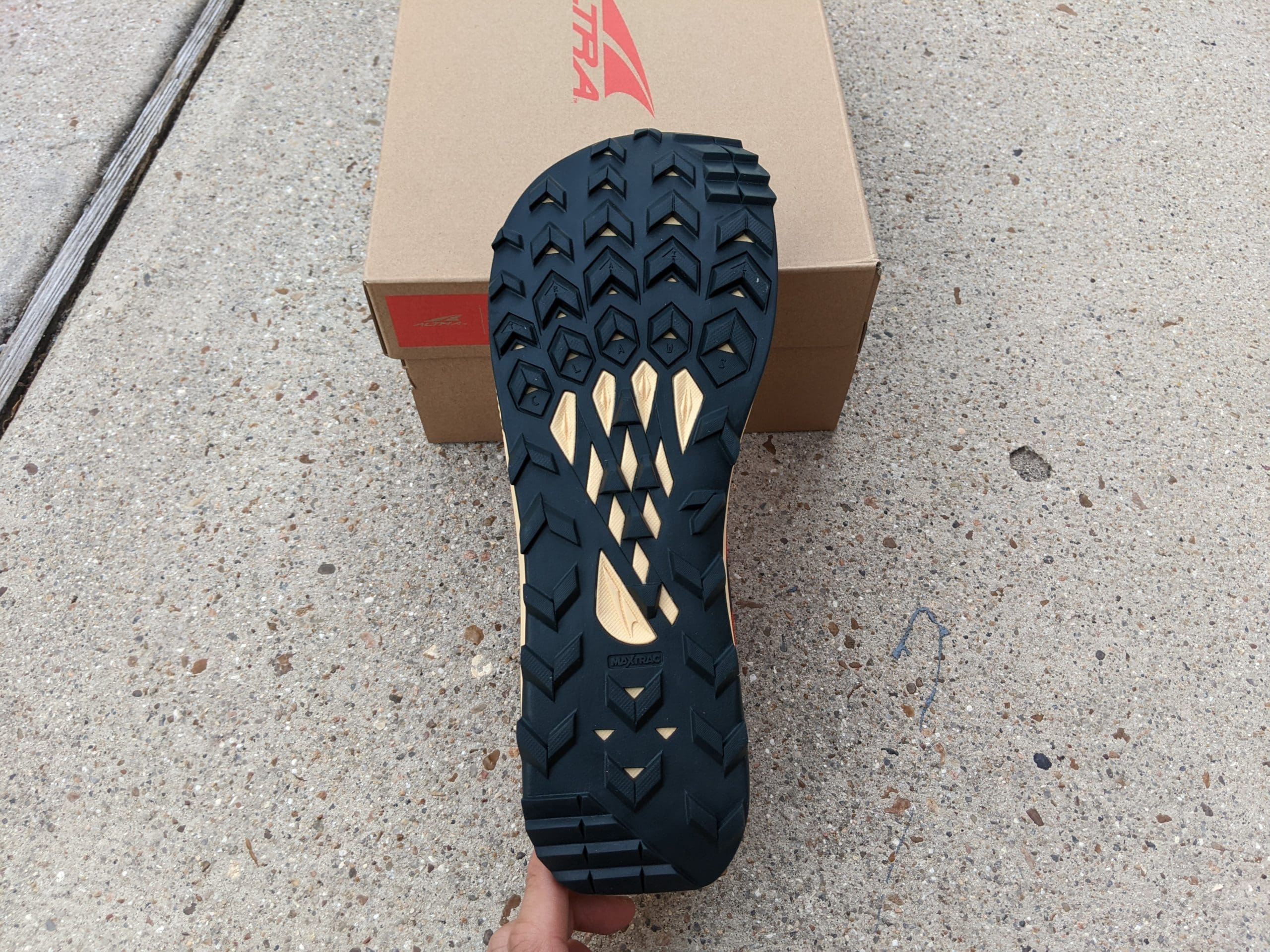
The Lone Peak heel lock is “ok”, but you’ll likely need to use a lace lock. The heel cup molds your heel and reduces the possibility of slipping, but you have to use the high lace loops to get a snug fit. Anyone with a more narrow, smaller heel, should consider the Timp first.
The MaxTrac outsole covers the whole sole! But it may wear quickly. The outsole seen on the Lone Peak 7 was updated; with a deep, multi-directional chevron design, and a brand new rubber compound. That’s awesome, but I feel it may come up short on the longevity test. The rubber used is reasonably soft and tacky, and in the past, rubbers like this have worn very fast for me.
AltraRunning.com
$150
(30-day free returns)
The Timp could be a great first stop on the Altra train if you’re transitioning from a traditional shoe brand.
It’s not like other Altra shoes, specifically the Lone Peak or Superior. It’s a little more fitted, slightly higher in stack height, and you most certainly roll off the front of the shoe much more than old Altras.
Volume is lacking throughout the shoe, but that’s not bad for everyone. If you have voluminous feet, the Timps could feel a bit snug. However, the shallow fit is great for some, such as my wife, because it opens up the Altra brand to her. The lower volume in the toes and bridge helps maintain a solid lockdown and ensures low-volume feet don’t drown in the shoe.
A new semi-rigid upper design for protection + comfort. The material used for the upper is a loose weave fabric with a nice balance of flexibility and security. That’s good because it allows the shoe to morph to your foot shape and protects it from scrapes and bumps.
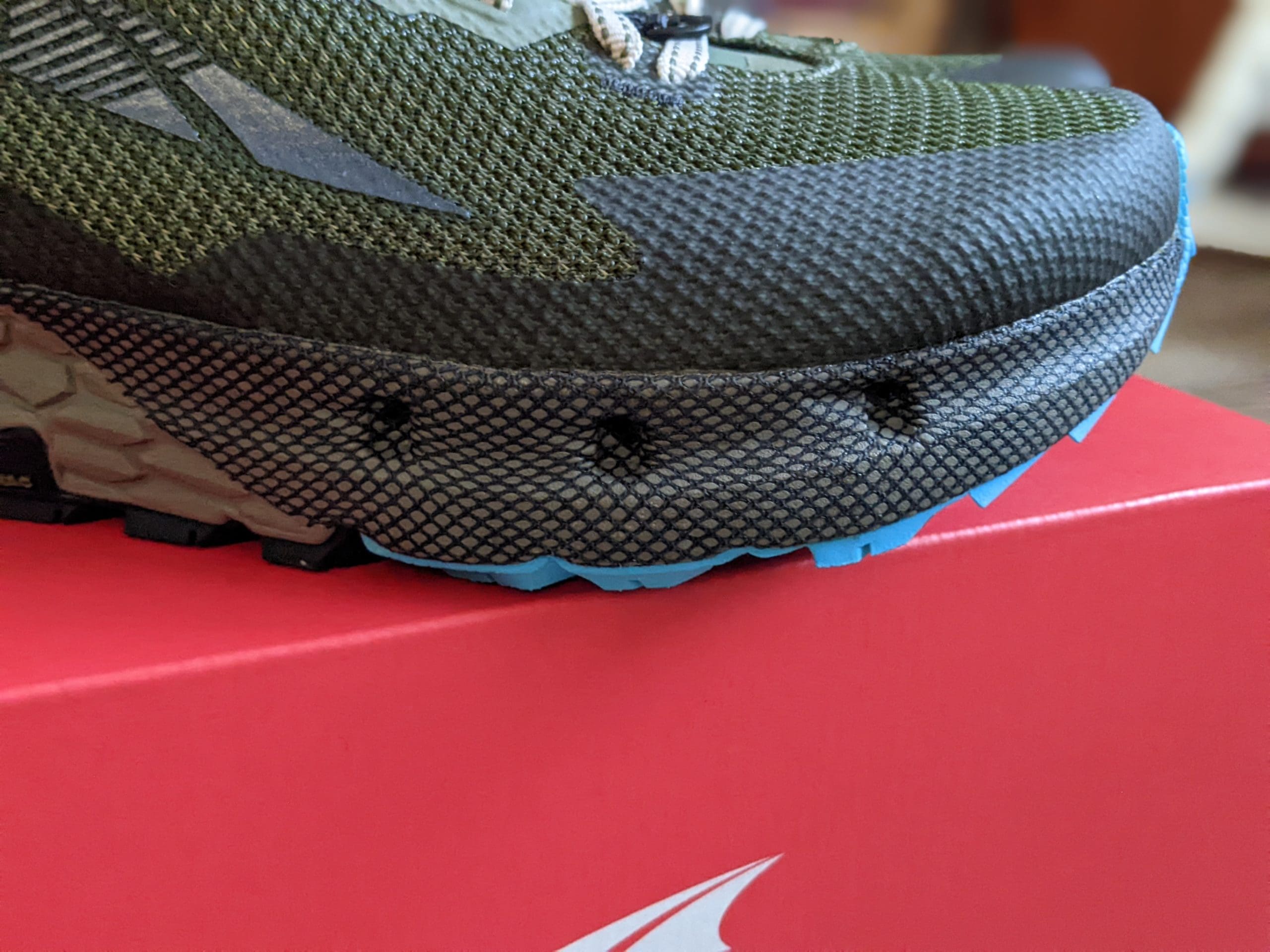
The slight rocker design feels like a Hoka. Usually, you’ll see rockers from brands such as Hoka, and this is the first time I’ve felt it in an Altra shoe. It’s not as aggressive as other brands, but it’ll be a welcome feeling if you’re looking to switch to Altra.
The outsole leaves a lot to be desired. Do you run on dry, dusty trails? Then the Timp will be fine. But that’s it. The grip on the Timp performs relatively poorly. The outsole is almost road-like, with shallow lugs and minimal rubber; it’s not like the soles we’re used to from the Lone Peak and Superior. And sadly, the outsole also wears prematurely, so you’ll only get around 300-400 miles out the shoe.
Drainage holes on the side cause a weak point under the ball of the foot. My wife suddenly started getting hotspots underfoot after 250 miles in the shoe. After inspecting the shoe, we found that the areas where the drainage tubes reside in the midsole had collapsed, creating a divot underfoot!
AltraRunning.com
$160
(30-day free returns)
As you can tell, these shoes end up being pretty different from one another, even though they’re both built to the Altra Zero-drop spec.
Cushion
Coming in at 25mm, the Lone Peak holds less cushion than the 29mm on the Timp. But it’s not the height difference that makes the most significant difference.
The Lone Peak cushioning is softer out of the box and continues to soften over time, whereas the Timp is semi-rigid and never softens like the Lone Peak.
The rigid foam used in the Timp creates a very different ride, almost urging you onto the next step. The Lone Peak leaves you to do all the work (that’s not a bad thing entirely!).
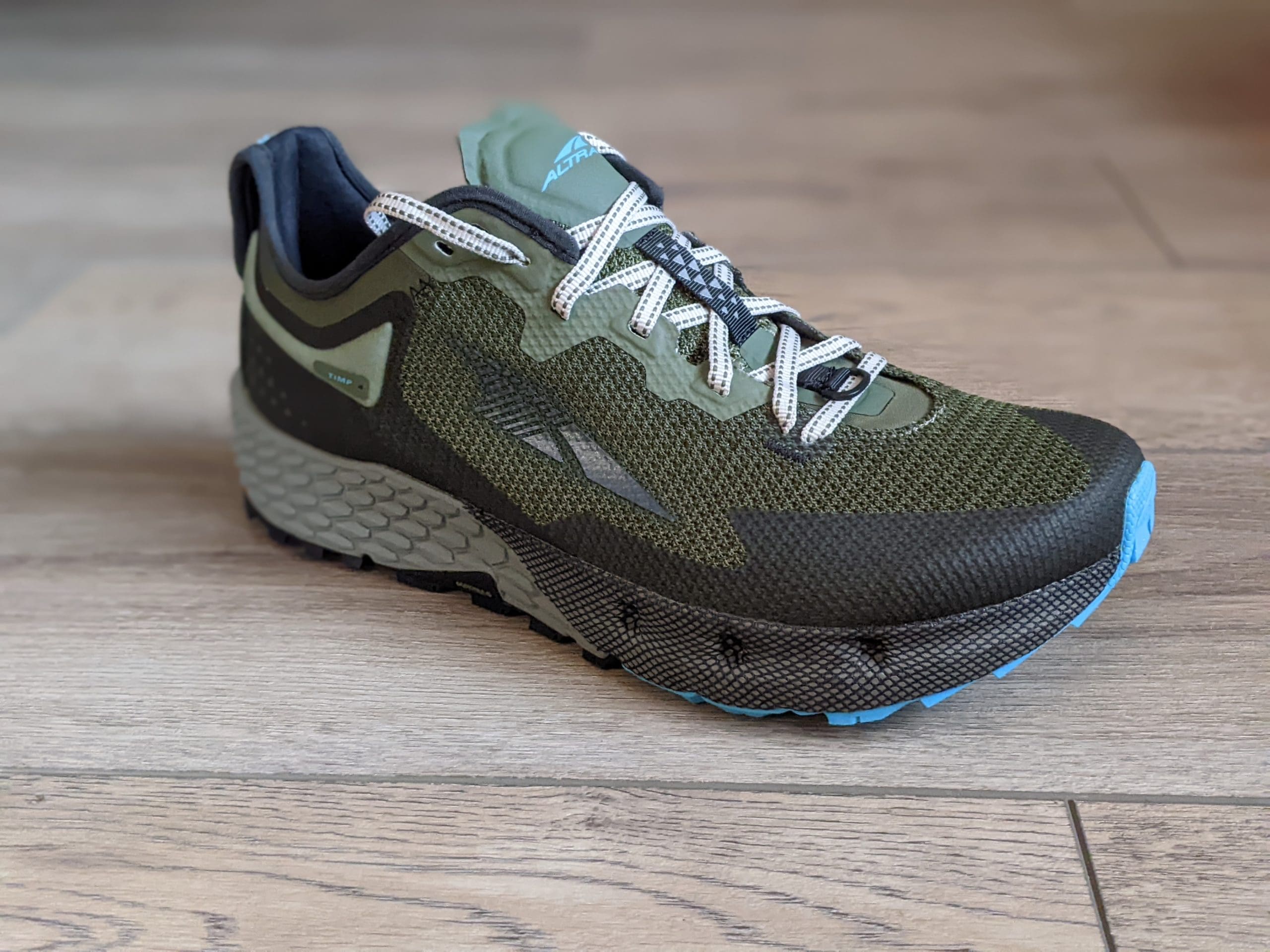
Volume, Width, and sizing
Another area of drastic difference is the sizing of the shoe.
Lone Peaks are known for their width and volume. Many Ultra runners love them for the long runs because when their feet swell, there’s still space in the shoe to wiggle your toes!
The Timp uses an entirely different sizing and, in comparison, is narrower and has less volume. For some, like my wife, that’s great. She has low-volume feet and would be slipping around inside Lone Peaks.
Also, if you’re used to a fit of a traditional company such as Nike, the Lone Peaks would feel alien. At the same time, the Timps may be a little more familiar.
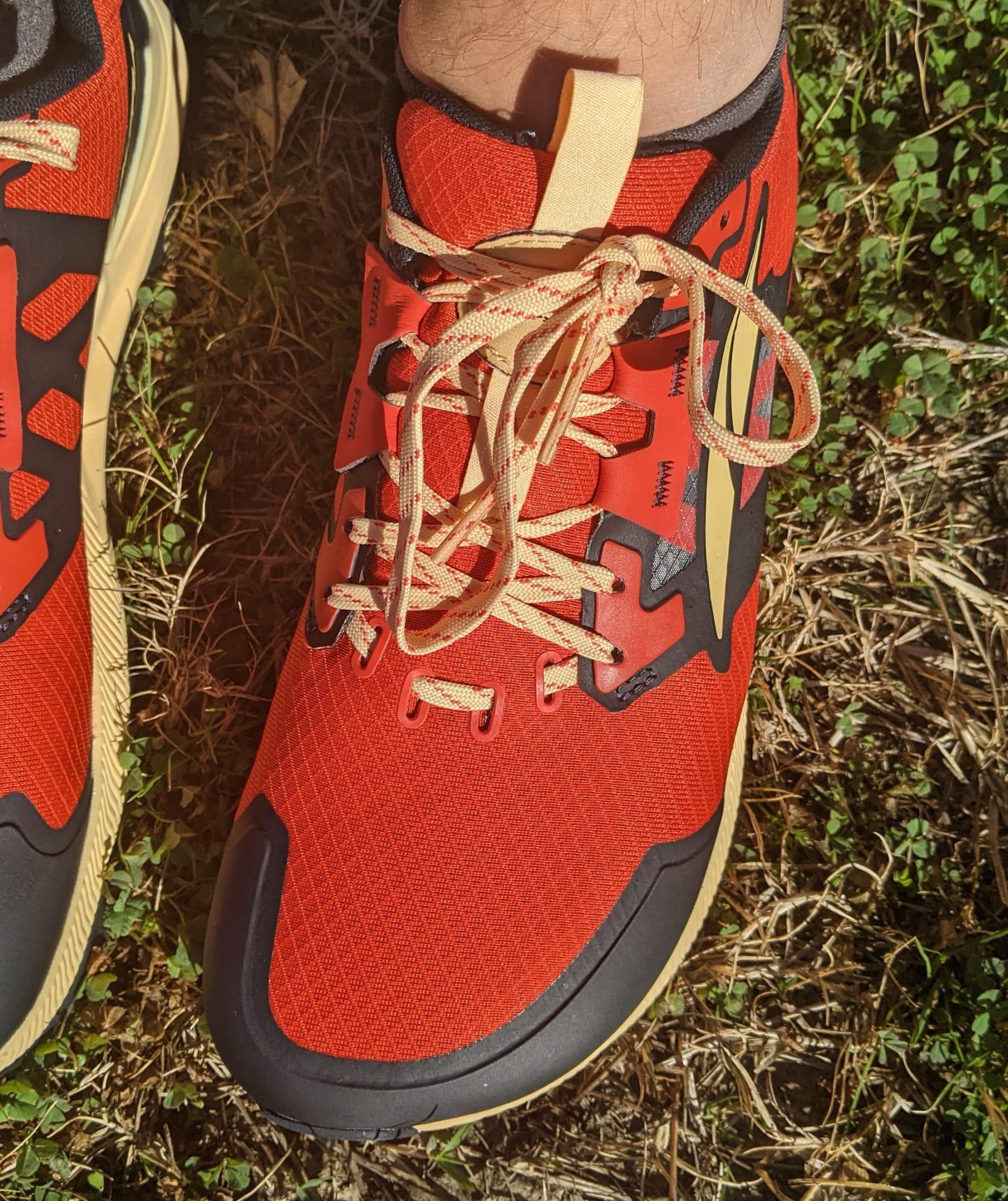
Outsoles
Again, there are significant differences here.
As mentioned in the Timp review section, the outsole is near road-like!
No large lugs, and a lot of flat exposed rubber, making it more of a door-to-trail shoe.
The 100% covered rubber outsole on the Lone Peak has arrow-shaped talons ready to grip the ground in whichever direction you land!
If you’re going to hit any mud, or you’re not running on lightly dusted trails, you must go with the Lone Peaks. The Timps are just not made for the gnarly stuff.
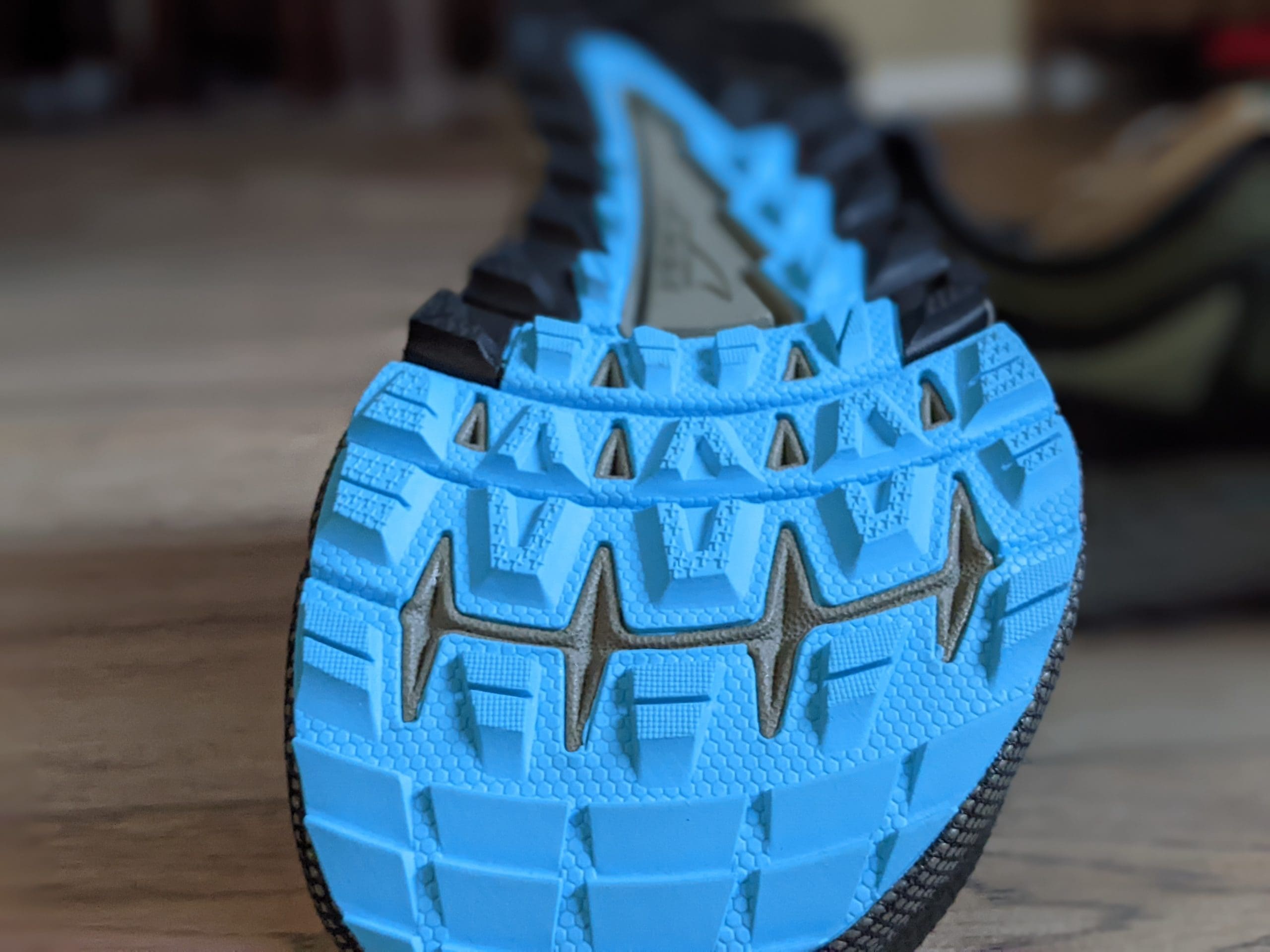
Flexibility and Structure
You likely know this by now, but the Timps has little flex and are much more structured than the Lone Peaks.
That extra 4mm of rigid cushion doesn’t allow the foot to flex and grip, which can be a good thing for long runs.
The Lone Peak is more like a barefoot shoe with cushion, flexing in every direction possible. Meaning your feet and calves will get a workout! But again, that can be a good thing too. If your feet work, your running gait can improve!
There are big distinctions between the Altra Lone Peak and Altra Timp. And that makes deciding between the two reasonably simple.
There’s a simple formula for choosing between the two shoes in order of importance.
- Do you need a super wide, voluminous fit?
- Lone Peak
- Do you like rockered shoes like Hoka?
- Timp
- Are you going to hit muddy technical trails?
- Lone Peak
You can find the full review for the two shoes here!
Now, are you interested in how these two shoes change your gait? Will Altras naturally make you a forefoot striker? And how does that compare to the whole Altra trail running lineup?
I recently tested each shoe with the same gait analysis used in Universities and found that, yes, indeed, shoes do make a difference, even within the same brand!
Check out the “gait analysis” section in the Altra trail runners’ buying guide.


